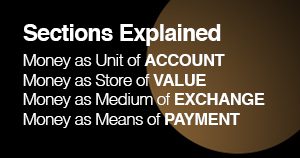US authorities are seeking to rein in the financial stability risks created by the runaway growth of the stablecoin market, according to a new report released yesterday.
In their report, the President’s Working Group on Financial Markets (PWG), the Federal Deposit Insurance Corporation (FDIC) and the Office of the Comptroller of the Currency (OCC) called for new legislation to address concerns about the rising systemic risk caused by stablecoins.
The PWG was set up in 1988 by an executive order from then-president Reagan, the FDIC insures US bank deposits and the OCC, a department of the US Treasury, supervises national banks, thrift institutions and the federally licensed branches and agencies of foreign banks in the United States.
Three demands for stablecoin issuers
The PWG, FDIC and OCC set out three principal demands yesterday in their report.
They said that US legislators should force stablecoin issuers to be insured depository institutions, they should require custodial wallet providers to submit to federal oversight, and they should restrict stablecoin issuers’ affiliation with other commercial entities.
Anyone with an account at an FDIC-insured bank in the US is protected against bank failure by federal insurance up to a limit of $250,000 per depositor, per insured bank, for each account ownership category.
Supervisors should also have authority to implement standards to promote interoperability among stablecoins, the report’s authors said.
“Stablecoins that are well-designed and subject to appropriate oversight have the potential to support beneficial payments options. But the absence of appropriate oversight presents risks to users and the broader system,” said Secretary of the Treasury Janet L. Yellen, commenting on the release of the report.
“Current oversight is inconsistent and fragmented, with some stablecoins effectively falling outside the regulatory perimeter,” Yellen went on.
“Treasury and the agencies involved in this report look forward to working with members of Congress from both parties on this issue. While Congress considers action, regulators will continue to operate within their mandates to address the risks of these assets.”
Stablecoin redemption rights vary
In the report, the PWG, FDIC and OCC pointed out that the current absence of regulation of stablecoins is confronting investors with a variety of risks.
For example, they said, stablecoin redemption rights can vary considerably, in terms of both who may present a stablecoin to an issuer for redemption and whether there are any limits on the quantity of coins that may be redeemed.
Some issuers are permitted under the terms of the arrangement to postpone redemption payments for seven days, or even to suspend redemptions at any time, giving rise to considerable uncertainty about the timing of redemptions, the PWG, FDIC and OCC went on.
And they said, stablecoins also differ in the nature of the claim provided to the user, with some providing a claim on the issuer and others providing no direct redemption rights to users.
By comparison, the PWG, FDIC and OCC went on, a demand deposit held at an insured depository institution is a claim on the issuing bank that provides the depositor with the right to receive US dollars upon request.
The value of this claim is insured and entitled to depositor preference in case a bank fails, they said.
Under a system of depositor preference, depositors’ claims on a bank are treated as senior to those of other creditors. This means that if the bank fails, the depositors get paid back first. Then what’s left over from the bank’s estate is divided up amongst the other creditors, depending on their order of seniority.
International coordination
In their stablecoin report, the US authorities conceded that they will need to act in coordination with other global rule-setting bodies.
In October 2020 the G20 Financial Stability Board (FSB) set out ten high-level recommendations to promote the coordinated regulation and supervision of global stablecoins.
Last month the Bank for International Settlements (BIS) and the International Organization of Securities Commissions (IOSCO) said the operators of systemically important stablecoins must follow the 2012 Principles for Financial Market Infrastructures (PFMI).
And last week the Financial Action Task Force (FATF) released updated guidance on crypto assets, in which it called for the money laundering and terrorist financing risks associated with stablecoins to be addressed in “an ongoing and forward-looking manner”.
Sign up here for the New Money Review newsletter
Click here for a full list of episodes of the New Money Review podcast: the future of money in 30 minutes
Related content from New Money Review









